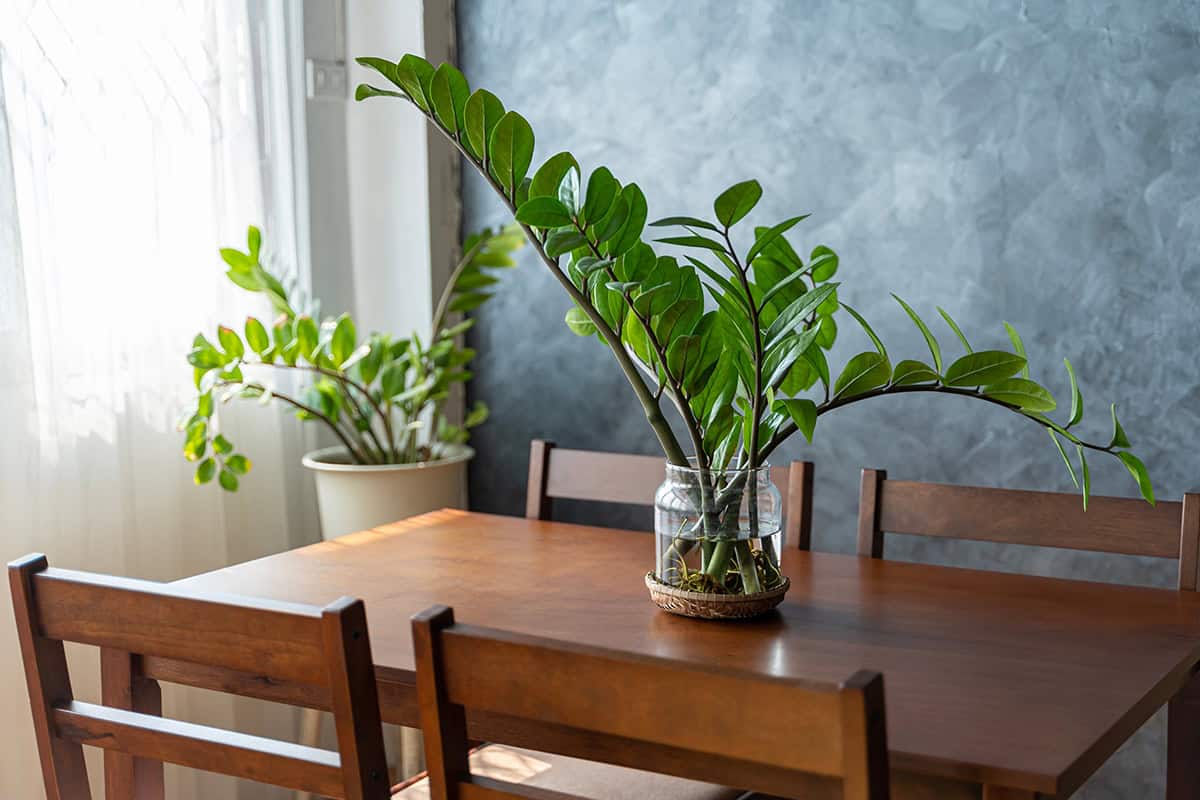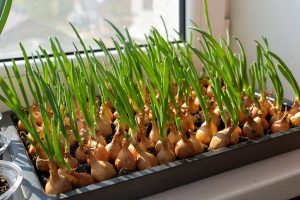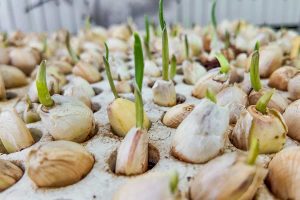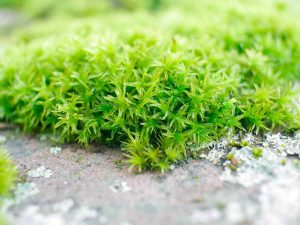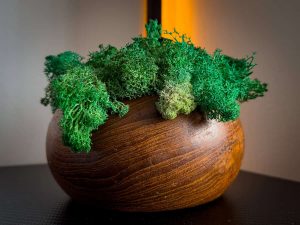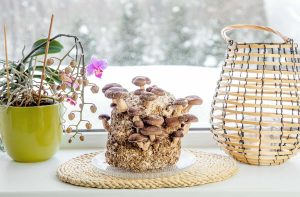If you’ve just brought home a ZZ plant, you might wonder how to keep it looking as healthy as the day you bought it. Known for its resilience, the ZZ plant still benefits from a few key care tips. This guide will help you unlock the full potential of your new favorite houseplant.
Table of Contents
What Is A ZZ Plant?
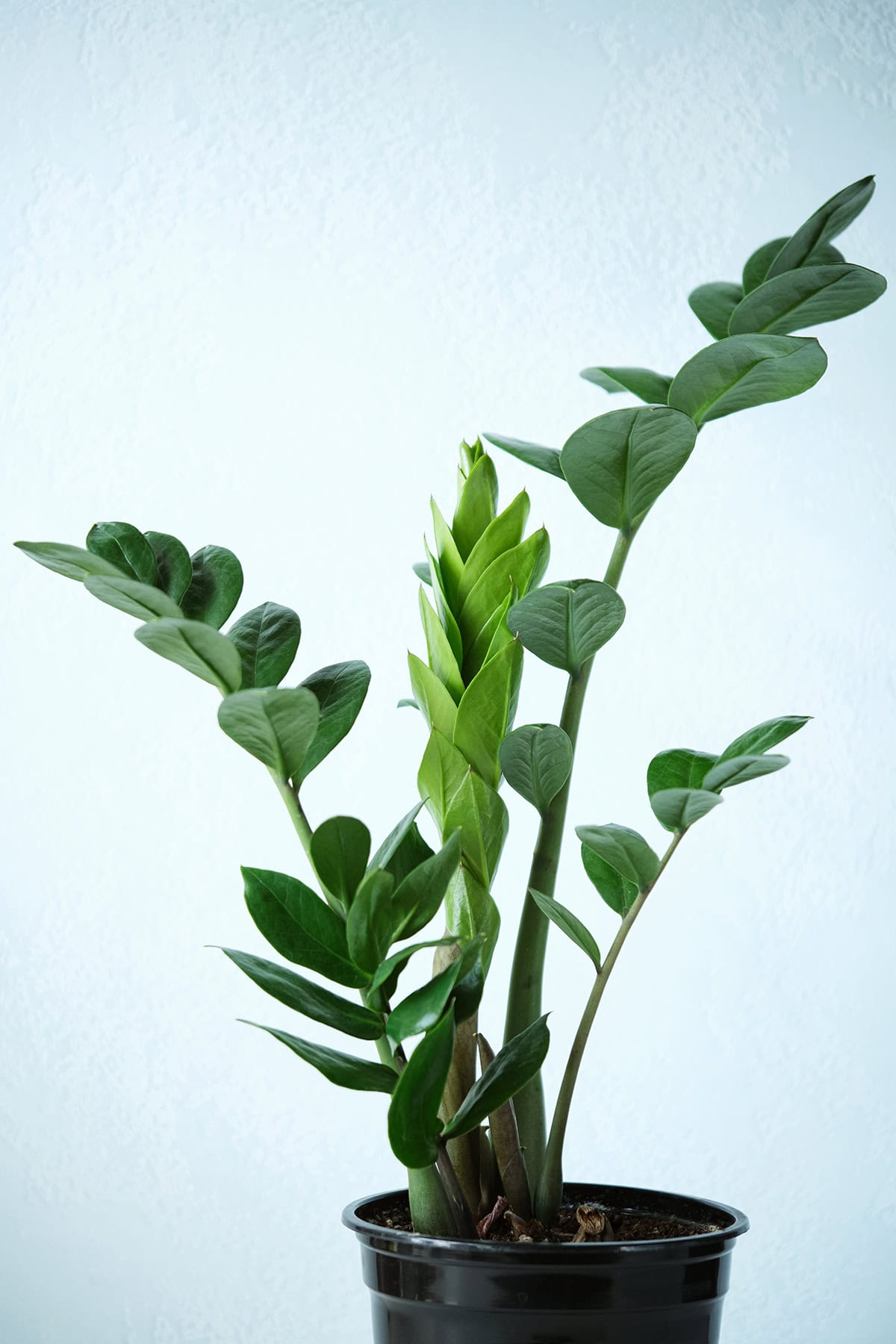
The ZZ Plant, known for its resilience and minimal care requirements, makes an ideal houseplant. It is appreciated for its attractive glossy leaves and ability to thrive in various environments.
Overview And Origin Of The ZZ Plant
The ZZ Plant, scientifically named Zamioculcas zamiifolia, belongs to the Araceae family. Native to Eastern Africa, it thrives in regions like Kenya and Tanzania. Its adaptability to different conditions, including drought, has contributed to its popularity.
Natural evolution in its native habitat has equipped it with tolerance to low light and less frequent watering. This plant showcases beautiful, waxy green leaves that grow from a sturdy rhizome. The rhizome stores water, which allows the ZZ Plant to survive in environments with irregular watering schedules.
Due to its slow growth, the ZZ Plant is a suitable choice for homes and offices where space constraints exist.
Why ZZ Plants Are Popular Houseplants
ZZ Plants are easy to care for and highly durable, making them ideal for busy individuals or those without a green thumb. You only need to water them infrequently, and they tolerate low light. These qualities make them versatile and adaptable to various indoor conditions.
Their air purifying properties add an extra benefit, reducing pollutant levels indoors. They offer an appealing aesthetic with their long, graceful leaves and compact growth.
This adds an attractive touch to any home or office. These features, combined with their resilience, explain why ZZ Plants are a common choice among houseplant enthusiasts.
Common Varieties Of ZZ Plants
Several attractive varieties of ZZ Plants exist, providing options for different aesthetic preferences. The most common type is the standard green variety with glossy leaves. There’s also the Raven ZZ, a dark, almost black variant, valued for its striking appearance.
The Zenzi ZZ exhibits thicker, curled leaves and more compact growth, making it suitable for smaller spaces. Each variety maintains the plant’s signature hardiness. This allows you to enjoy the unique beauty of each type without additional care challenges. Choosing the right variety for your setting allows personalization while enjoying the ZZ Plant’s benefits.
Growing Conditions
ZZ plants thrive in versatile environments, making them suitable for various indoor spaces. They require minimal maintenance and adapt well to changing conditions, but optimal growth depends on specific requirements related to light, temperature, humidity, soil, and pot choice.
Light Requirements: Low To Bright Indirect Light
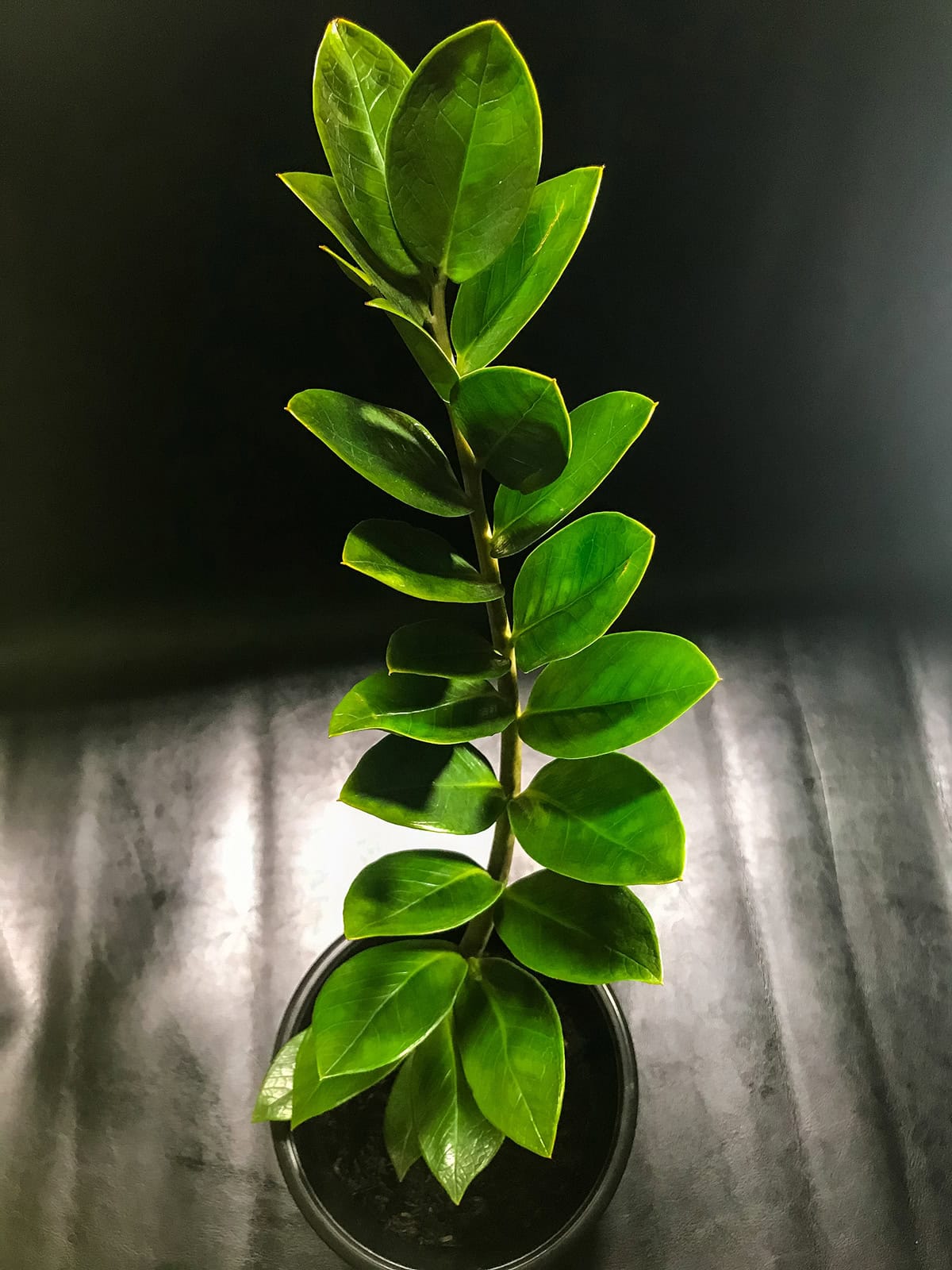
ZZ plants are flexible when it comes to lighting. They can tolerate low light, making them ideal for dimly lit areas. However, exposure to bright, indirect light encourages better growth and vibrant foliage. Avoid direct sunlight. It can scorch the leaves.
If placed in a darker corner, consider rotating the plant occasionally to ensure even growth. Artificial lighting works too, but proximity is key. Keep it within a reasonable distance from fluorescent lights for the best results.
Temperature And Humidity Needs
ZZ plants prefer warm surroundings, thriving at average household temperatures of 65-75°F. Avoid placing them near cold drafts or heating vents as sudden temperature changes can stress the plant. Regarding humidity, ZZ plants are not demanding.
They handle dry conditions well but benefit from occasional misting in particularly arid environments. If your home has very low humidity, placing a humidity tray nearby can also help maintain their lush appearance. These conditions ensure the plant retains its health and resilience.
Best Soil Type For ZZ Plants
A well-draining soil mix is crucial for ZZ plants to prevent root rot. Use a potting mix formulated for succulents or cacti. This mix ensures that excess water drains quickly, protecting the roots from sitting in moisture.
If you notice poor drainage, consider mixing perlite or sand into the soil. This enhances aeration and water flow, keeping the roots oxygenated. Consistent soil composition helps the plant maintain steady growth and health.
Choosing The Right Pot And Drainage
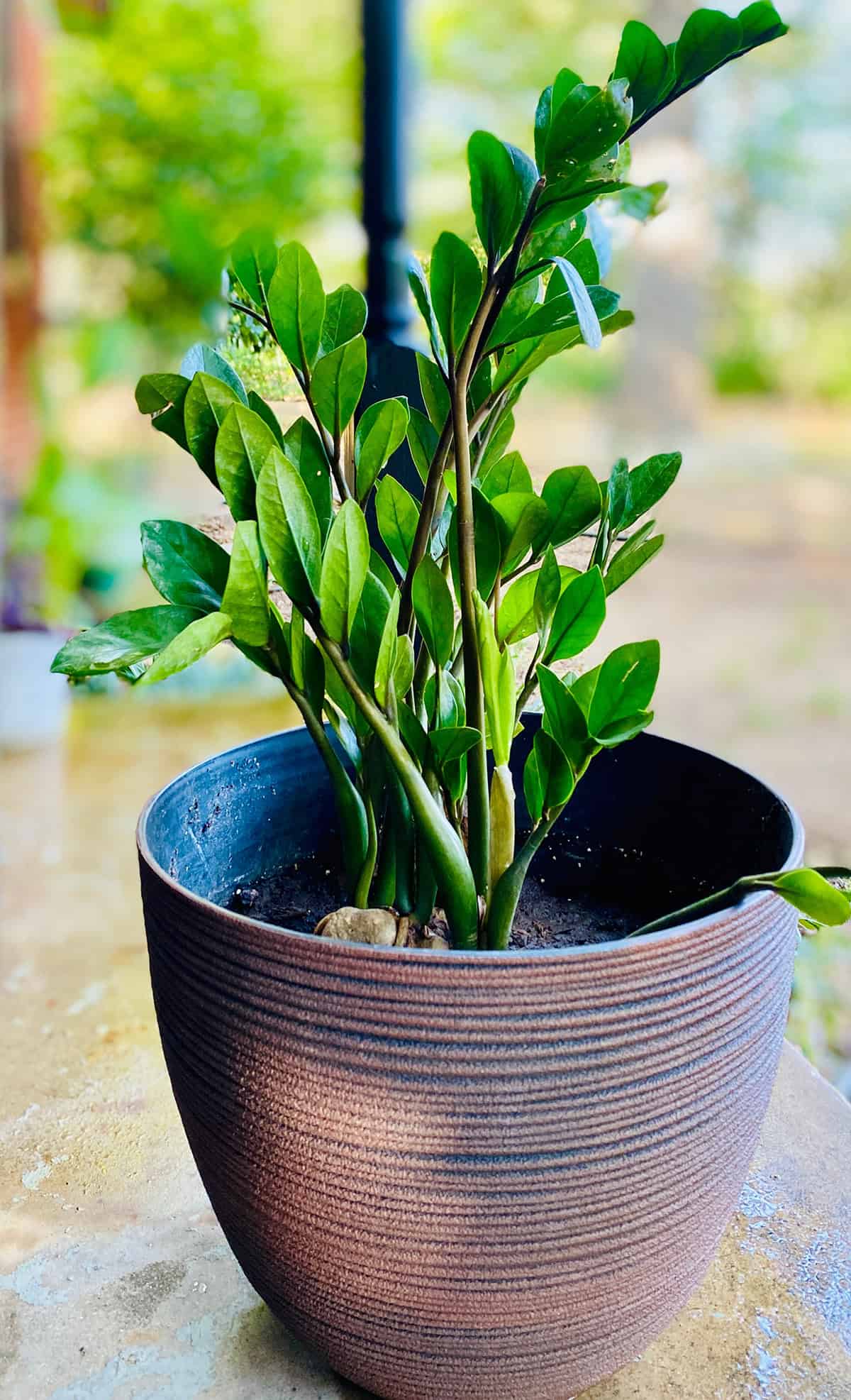
Selecting the right pot greatly influences the health of your ZZ plant. Use a pot with drainage holes to allow excess water to escape, avoiding root rot. Terra cotta pots are effective. They absorb moisture and provide natural aeration for the roots.
Size matters too; ensure the pot is proportionate to the plant’s size. A pot that’s too large can lead to oversaturation. When repotting, choose a container only slightly larger than the current one to ensure optimal growth conditions. This balance promotes robust development and longevity for your ZZ plant.
Watering Tips

The ZZ Plant is known for its ease of care. Proper watering is key. To enjoy healthy growth and vibrant leaves, understanding the right watering practices is essential.
How Often To Water
The ZZ Plant thrives with less frequent watering. Its rhizomes store water efficiently. Water when the top 2-3 inches of soil are dry. This might mean watering every three weeks in most indoor environments.
Be mindful of seasonal changes; reduce frequency as winter approaches. Overwatering is a common mistake. Stick to a regular schedule and adjust based on environmental factors such as humidity and light.
Signs Of Overwatering And Root Rot
Overwatering can lead to serious issues like yellow leaves and root rot. Rhizomes may rot if exposed to too much water. Look for mushy roots and discolored patches. If you notice these signs, stop watering immediately.
Allow the soil to dry out before your next attempt. It’s crucial to use well-draining soil to prevent excess moisture. Monitor your plant carefully and react quickly to preserve its health.
Watering Methods That Support Healthy Growth
Effective watering involves more than just frequency. Pour water directly onto the soil. Ensure thorough saturation without leaving the plant sitting in standing water. Use pots with drainage holes. This helps excess water escape, preventing root decay.
Consider bottom watering as an alternative. Place the pot in a tray of water, allowing roots to uptake moisture naturally. This method supports balanced hydration and prevents water from lingering at the root base.
Fertilizing
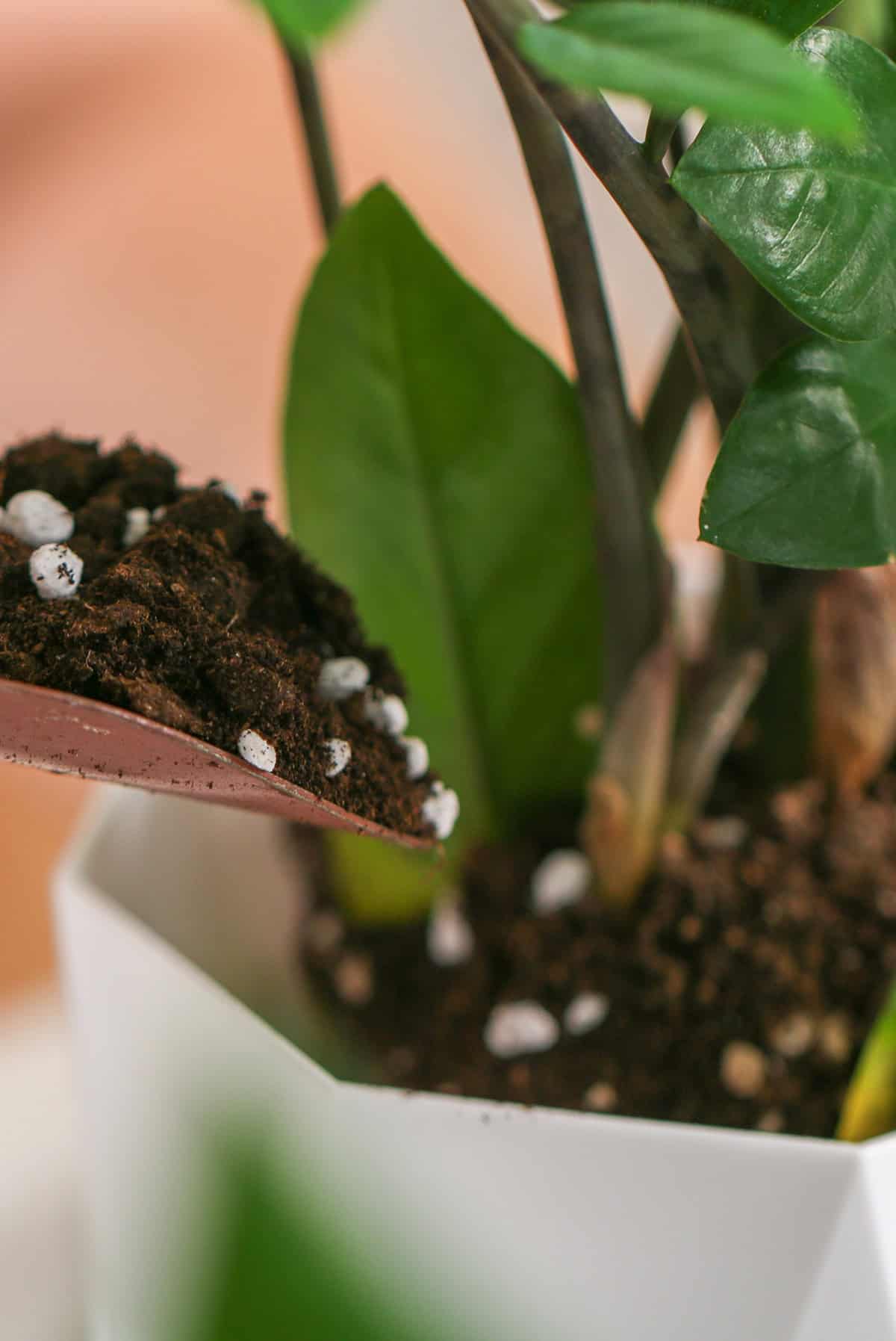
Fertilizing your ZZ Plant is crucial for maintaining its lush, green foliage. Use the right type of fertilizer, apply it correctly, and ensure essential nutrients are available to keep your plant healthy.
Best Fertilizers For ZZ Plants
Choosing the right fertilizer is key for a thriving ZZ Plant. Look for a balanced, water-soluble fertilizer with an equal ratio of nitrogen, phosphorus, and potassium (NPK). A 20-20-20 or 10-10-10 formulation works well. These blends support general growth and root development.
Organic fertilizers, like compost tea, are also excellent. They release nutrients slowly and improve soil structure. Avoid high nitrogen fertilizers meant for flowering plants. ZZ plants rarely bloom indoors, so unnecessary phosphorus is best avoided.
When And How To Fertilize
Knowing when and how to fertilize your ZZ Plant is essential. Apply fertilizer during the growing season, typically spring and summer. This helps the plant make most of the nutrients during active growth. Water your ZZ Plant thoroughly before fertilizing.
It prevents root burn from concentrated nutrients. Apply the fertilizer at half-strength to avoid over-fertilizing. Once every six to eight weeks is generally sufficient. In winter, ZZ Plants enter dormancy. Fertilizing during this time can harm your plant and should be avoided.
Nutrients That Help Leaves Stay Glossy And Green
Certain nutrients are particularly beneficial for maintaining the glossy, green appearance of ZZ Plant leaves. Magnesium and iron are critical. They facilitate chlorophyll production, leading to vibrant green foliage. Supplement these micronutrients occasionally with a chelated iron solution.
Calcium supports cell wall structure, enhancing the rigidity and shine of leaves. It is often included in comprehensive fertilizers. Zinc and manganese are also helpful. They support overall leaf function, although usually present in small amounts.
Tips To Make Your ZZ Plant More Beautiful
Enhancing the beauty of your ZZ plant involves a combination of mindful care practices. Focus on the health of its leaves, maintain cleanliness, ensure balanced growth, and provide ample light for upright posture.
Prune Yellowing Or Damaged Leaves
Regular pruning keeps your ZZ plant looking lush and healthy. Remove yellow or damaged leaves promptly. Use clean, sharp scissors or pruning shears for a clean cut. Trim close to the base without harming healthy stems. Removing unsightly leaves redirects energy to healthy growth, maintaining the plant’s vibrancy.
Wipe The Leaves To Keep Them Shiny And Dust-Free

Dust can dull the appearance of your ZZ plant’s glossy leaves and inhibit photosynthesis. Use a soft, damp cloth to gently wipe each leaf. Avoid harsh chemicals; water is usually sufficient. This not only makes your plant look more attractive but also promotes healthier growth by improving light absorption.
Rotate The Pot For Symmetrical Growth
Uneven growth can make your ZZ plant look lopsided. Rotate the pot every few weeks to encourage balanced growth on all sides. This rotation ensures all parts of the plant receive equal light exposure. Regularly adjusting the plant’s position fosters an aesthetically pleasing, symmetrical appearance.
Support Upright Growth With Proper Lighting
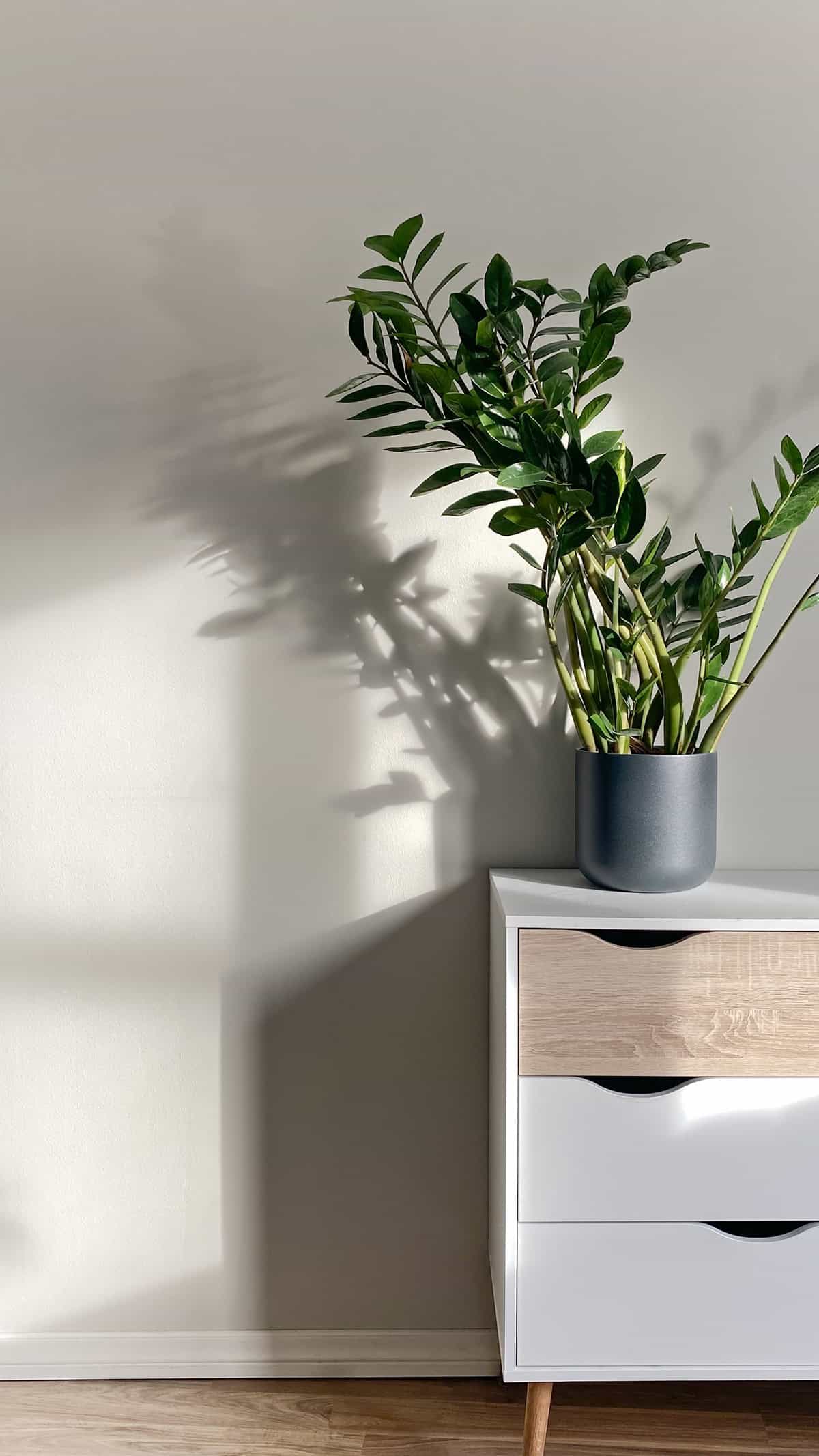
ZZ plants need indirect sunlight for steady, upright growth. Place your plant near a bright window with filtered light. Avoid direct sun, which can scorch its leaves. Sufficient lighting supports strong, upright stems and prevents leggy growth. Properly lit, your plant will have a robust and healthy structure.
Repotting And Propagation Tips
Proper care of your ZZ plant involves knowing when to repot and how to propagate effectively. Understanding the signs for repotting and the methods of propagation can ensure your plant’s health and growth.
When To Repot Your ZZ Plant
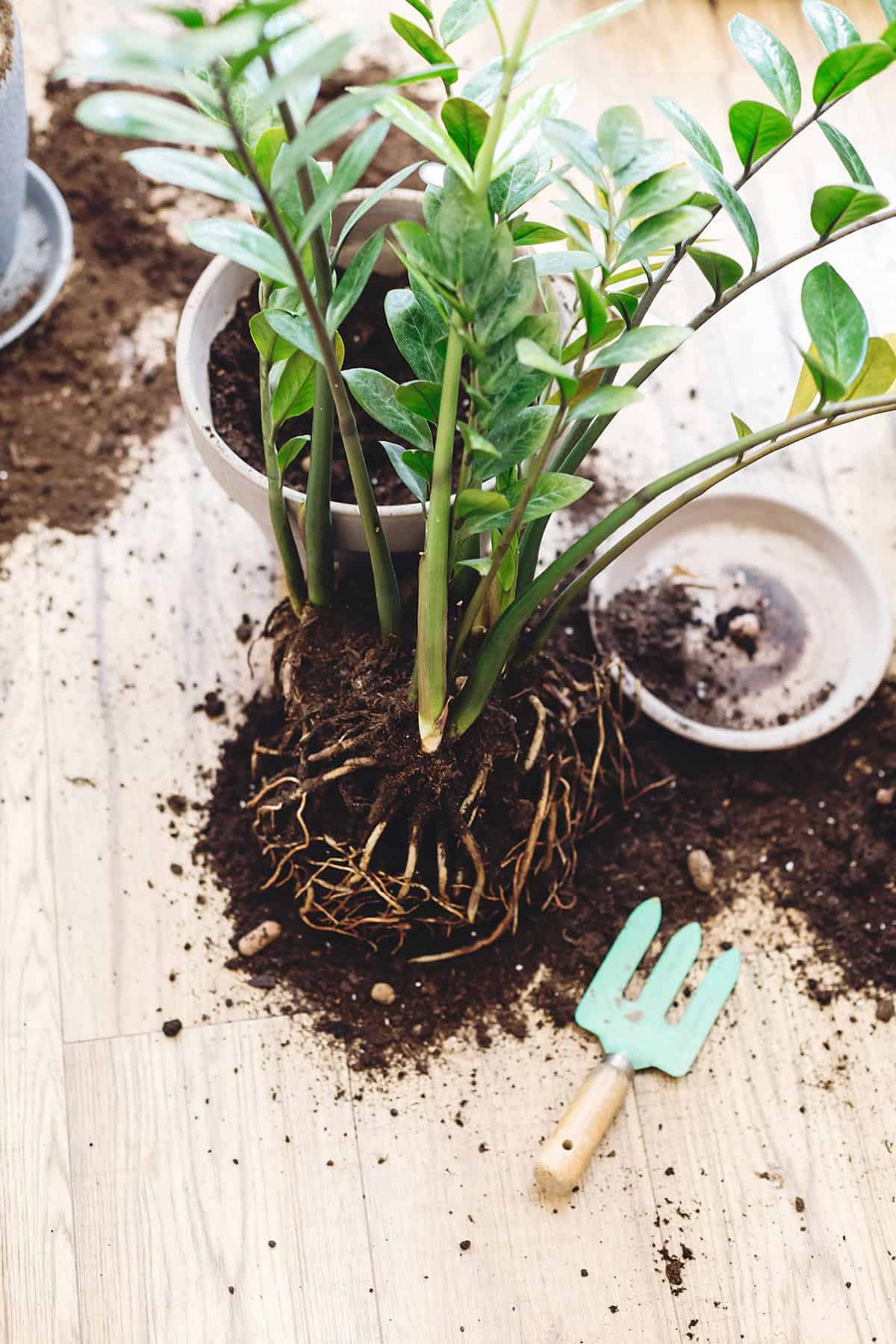
Repotting is beneficial for your ZZ plant every 2-3 years. This allows the roots to have enough space to grow, promoting healthier foliage. Look for signs like roots protruding through the drainage holes or slow growth. If you notice these, it is likely repotting time. Choose a pot that is one size larger, ensuring it has good drainage. Fresh potting mix helps in supporting new growth and maintaining plant health.
How To Divide Or Propagate By Leaf Or Stem Cuttings
Propagating your ZZ plant can be done by division or through leaf and stem cuttings. For division, separate the rhizomes and plant them in new pots. If using leaf cuttings, select healthy leaves, let them dry for a day, and plant them in a pot.
Stem cuttings work too, by trimming a healthy stalk, allowing it to callous and then placing it in soil. These methods help in producing new plants and expanding your collection.
Signs Your ZZ Plant Has Outgrown Its Pot

Recognizing when your ZZ plant has outgrown its pot is essential for its well-being. Look for roots growing through drainage holes, soil drying out quickly, or the plant appearing top-heavy and unstable. Such signs indicate that it may be time for a bigger pot. Frequent watering demands or diminished growth also signal the need for repotting. A timely intervention can drastically improve your plant’s vitality and appearance.
Common ZZ Plant Problems And Solutions
Taking care of a ZZ plant comes with a few challenges. You might see leaves droop or pests like fungus gnats appear. Addressing these issues effectively ensures the health and beauty of your plant.
Drooping Or Curling Leaves
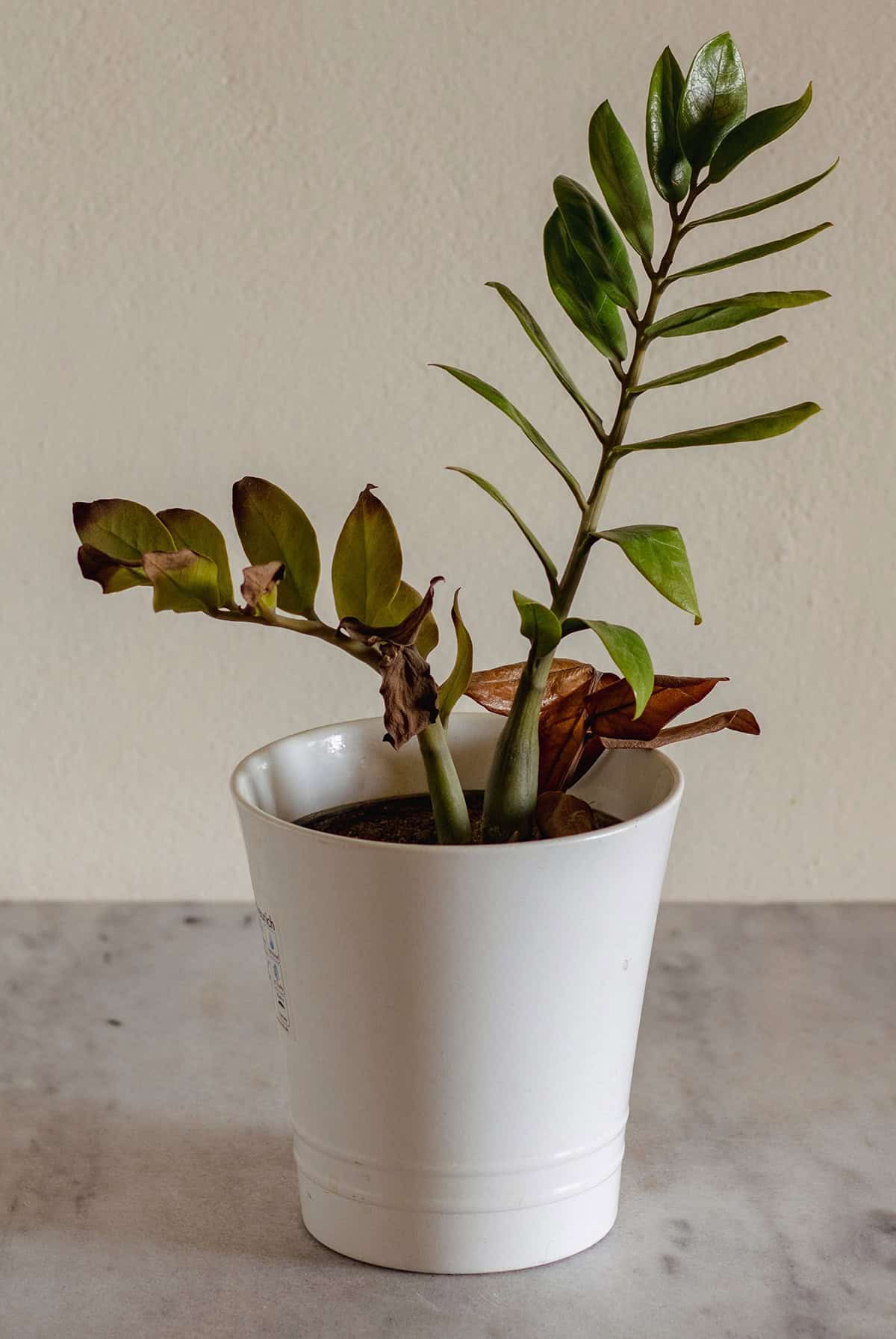
Drooping or curling leaves signal stress in your ZZ plant. This often results from watering issues. Overwatering is a frequent problem. Use well-draining soil and let the top inch dry out before watering. Adjusting your watering schedule might solve the issue.
Light is another factor. Ensure your ZZ plant receives indirect light. Too little or direct sunlight can cause leaf problems. Relocate your plant if needed. Regular observation helps spot these changes early. Maintaining proper humidity around 40-50% supports leaf health.
Pest Issues: Fungus Gnats, Mealybugs
Fungus gnats and mealybugs can infest ZZ plants. Fungus gnats thrive in overly damp soil. Reduce watering to control their spread. Yellow sticky traps can also be effective.
Mealybugs appear as white, cottony masses. Remove them with a cotton swab dipped in alcohol, targeting affected areas. Neem oil sprays might offer additional protection, applied every two weeks. Ensure proper air circulation around the plant to prevent infestations. Regular monitoring helps identify pests early on.
Fixing Yellow Or Brown Leaf Tips
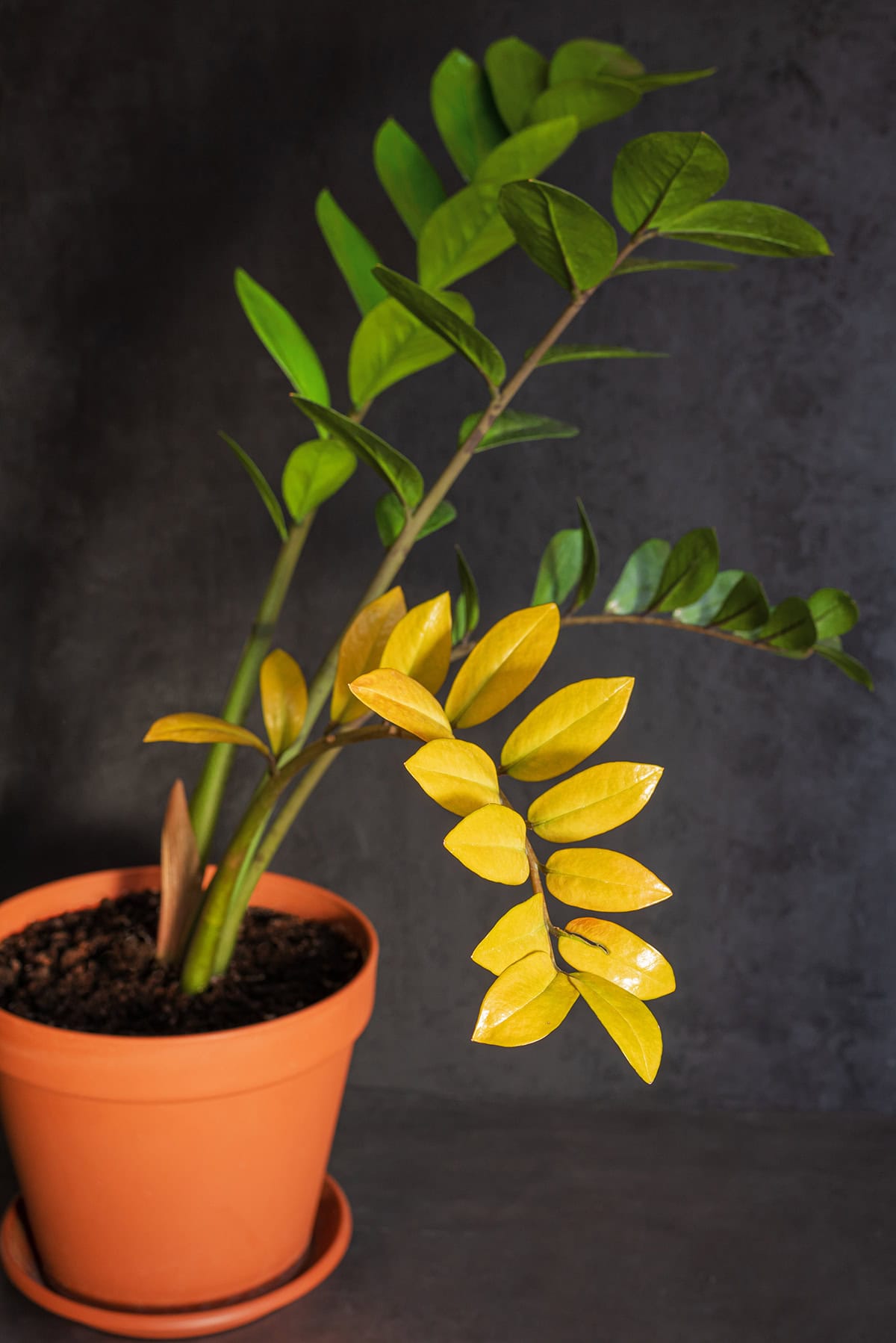
Yellow or brown leaf tips often indicate environmental stress. Overwatering can cause yellowing, while excess minerals from fertilizers might brown the tips. Cut back on feeding in fall and winter.
Monitor the potting soil. If it’s compacted, repot your plant with fresh, well-draining soil. Consider water quality, as high fluoride can damage leaves. Use distilled or filtered water if municipal water is hard. Trimming affected leaves helps maintain a neat appearance, but ensure you address the cause.
